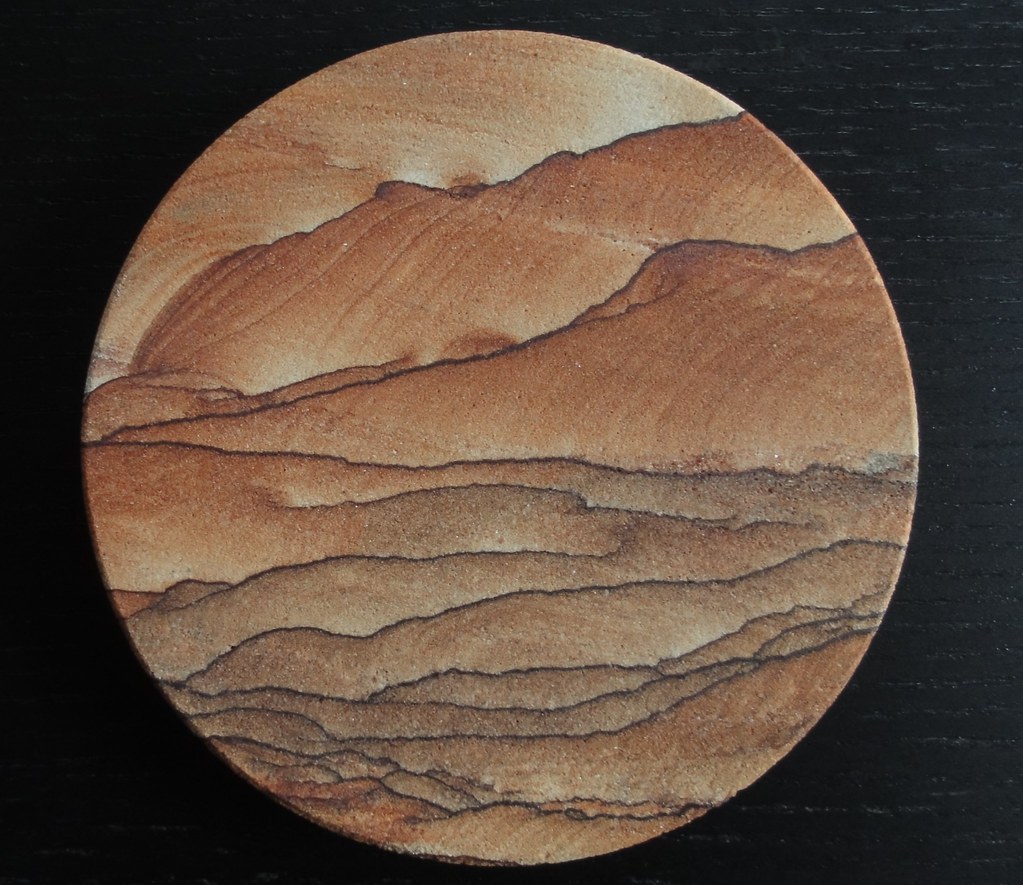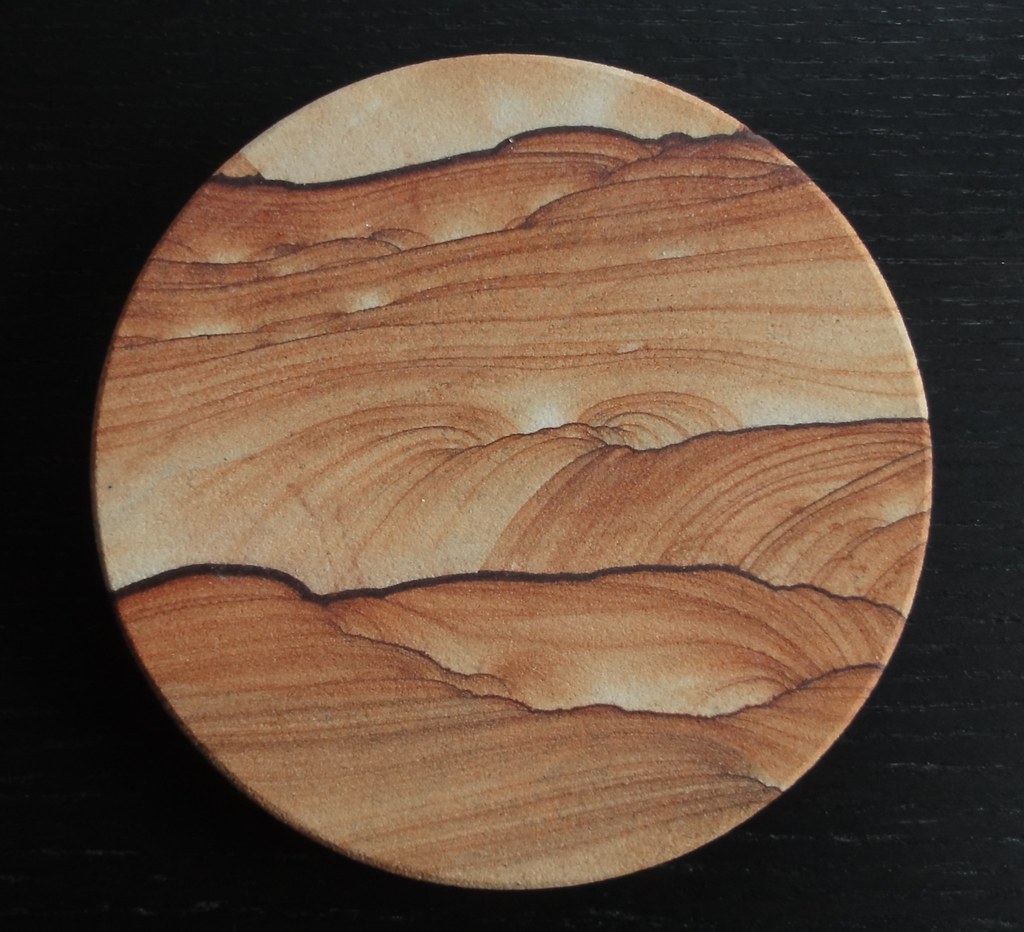Had no earthly idea what Liesegang banding was, but if Callan says it's the best, you know it's something good. So I clicked through. Do it. Go on.The best Liesegang banding you will see today is here http://bit.ly/fgzbBO and here http://bit.ly/gFjQja.
Amazing, isn't it just? Made little lights go flash for me, because it turns out I've spent a lot of time surrounded by Liesegang banding. It's all over the sandstones in northern Arizona, and we used to sell bits of it in our bookstore, coasters and bookends and such. It's marketed as "picture sandstone." The patterns are gorgeous. When I saw stacks of coasters at the rock shop near Gingko Petrified Forest State Park, I had an acute onset of terminal nostalgia and bought some. Lovely!
 |
| One o' mah coasters. Just look at that Liesegang Banding! |
In the meantime, we get to look at the pretty results. Imagine my delight when, in a Google search for Liesegang banding, I got led to none other than Brian Romans's very own blog, and this gorgeous field photo:
 |
| Liesegang banding, Valley of Fire State Park, Nevada (© 2009 clasticdetritus.com) |
Then, after a great many years and a general dry-out, you get wildly-patterned formations like the above, and some bugger comes along to quarry them for things like this:
 |
| Mah other coaster. I like the way the Liesegang banding resembles the dune fields the sandstone formed from. |
In nature, things aren't so neat as his concentric rings. Liesegang bands appear as, of course, bands, but also rings, spirals, and spheres, oriented in various directions, with younger sets cutting across and sometimes dissolving older ones.
One of the most fascinating things about these bands is that they're formed by a self-organizing process: they don't need a template for their patterns. They're not directed by something living. They just happen. All of that beautiful, artistic complexity is the result of simple, mindless processes. I find that enthralling. The power of physics, chemistry and geology to combine and form such patterns is amazing.
Wonderful ol' world, innit?
References:
"Liesegang Banding." James St. John, Ohio State University-Newark
"Liesegang pattern development in carbonating traditional lime mortars." Rodriguez-Navarro et al, Proceedings of the Royal Society, 2002








3 comments:
Picture Sandstone coaster sets - I have some that aren't banded, but yours are real neat.
There's a nice outcrop of Liesegang banding on the Quartzville trip- I think a wider range of colors, but not as landscape-evocative. The best I've ever seen were in Northern Nevada, near Quinn crossing, a site Silver Fox mentioned not too long ago. The mix of colors in those was mind-blowing! I'm afraid, though, that I don't think I could find that spot again... it was off through several miles of sage on a dirt track (NOT road), then up and over a hill on foot. Kinda sad about that, because there was a wild diversity of rocks cropping out there.
BTW, if you didn't see it, this is a must-read for the area we'll be visiting:
http://pumicecastle.blogspot.com/2011/04/learning-from-gentry-maars-and-tuff.html
I've been meaning to get back to it, but I have a tendency to back-burner stuff right off the back of the stove.
Post a Comment